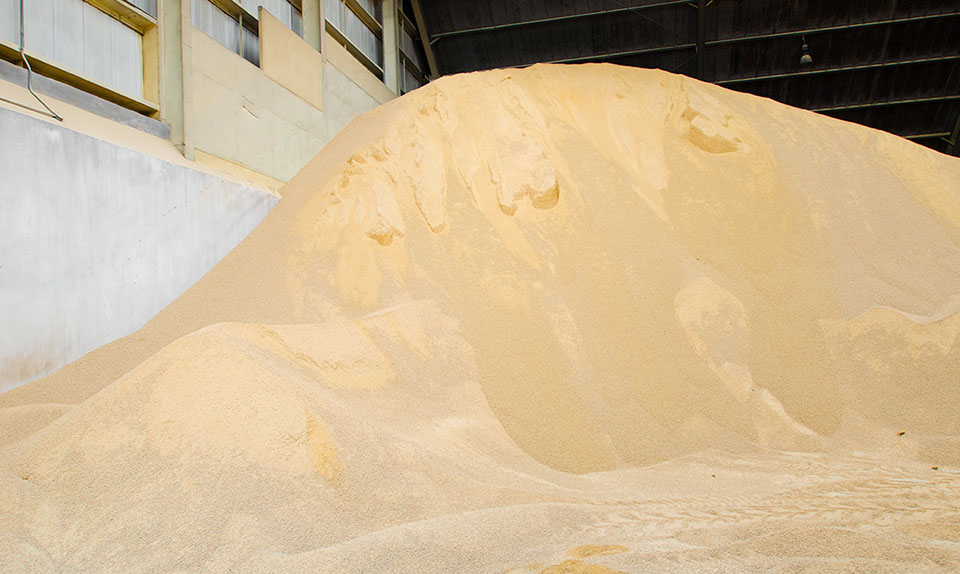
(Photo: Iowa Soybean Association).
Factors to consider when marketing new crop grain
April 20, 2023 | Kriss Nelson
When looking for new crop market opportunities, consider the potential shift in planned cropping acreage, domestic soybean processing and global demand.
Prospective plantings report
On March 31, the U.S. Department of Agriculture (USDA) released its Prospective Plantings report. The survey-based response revealed a potential of 87.5 million acres of soybeans and 91 million acres of corn expected to be planted this year.
“Over the next couple of weeks, as farmers get deeper into fieldwork, and the planting season evolves, there is going to be volatility between what the expected planting acres are and what the final area winds up being,” says Mac Marshall, vice president, of market intelligence for the United Soybean Board (USB).
The forecasted 92 million planted acres of corn is 4% from the 88.6 million acres planted in 2022.
“Last year, the market was looking for 92 million acres of corn, and it didn’t come close to that because of high fertilizer prices and availability issues,” says Marshall.
Although fertilizer and other input prices are elevated, they are not at last year’s levels. This could be causing a bump in potential corn acres this year.
Moving ahead into the planting season, further potential shifts in acreage will be based on spring conditions, especially in the Dakotas, where there were notable increases in corn and soybean acres.
Trend yields of 87.5 million acres of soybeans could bring a strong crop.
“With a good acreage figure in play, it could set us up to help replenish some of the global supplies lost with the drought of Argentina and the backdrop of a robust demand picture,” says Marshall.
Domestic and International Demand
What will be the demand environment for the new marketing year on Sept. 1 as harvest nears?
U.S. demand will continue to ride the wave of crush expansion, with some of the first announced crush plants coming online.
“Crush prices have seen a decline the past few months, but prices look to be renewing and as more capacity comes online this next marketing year, crushing more soybeans domestically,” Marshall says.
Soybean exports to China continued to ship strong into January – a longer export window than usual with the delayed harvest in Brazil.
Although it is exciting to continue to send soybeans to our No. 1 overall volume market, will that continue?
“All eyes are on Brazil as the major source of soybeans,” says Marshall.
Not only is it a seasonal factor, as Brazil is finishing soybean harvest, but political considerations are going on with Brazil, hoping to strengthen ties with China further.
“What this means as a competitive standpoint with the United States is unknown, but we have already seen a longer-term trend of more sourcing of whole beans out of Brazil by China,” says Marshall.
As a major supplier and exporter of soybeans, the United States needs to continue diversifying its demand channels.
Marshall says the U.S. Soybean Export Council (USSEC) has been robustly looking at geographic diversification, bringing a significant growth of U.S. exports of soybeans in developing mid-stage markets.
Issues facing some exports to developing markets in 2022 included currency issues in some early-stage developing markets.
“It certainly doesn’t deter our long-term strategy to continue to invest in market development in those countries. We will look for some reversal to those headwinds we faced next year,” says Marshall.
Marketing New Crop Soybeans
Although there is a good pricing environment across the futures curve for 2023-2024 delivery, it differs from the environment we have seen in the last two years.
Inventory positions at the beginning of the marketing year could substantially affect harvest-time pricing.
The USDA Grain Stocks report on March 31 revealed March 1 inventory is 1.69 billion bushels of soybeans, just 13% of what was on hand this time last year with the 1.9 billion bushels.
“That 1.69 billion bushels might sound like a lot, but, over the last four to five years, our second-half soy disappearance has been in the 1.5 to 1.6 billion bushel range,” says Marshall. “We could see further contraction in our expected carryover conditions to start the new marketing year.”
Starting a new marketing year with low supplies could provide an opportunity for new crop pricing but can also mean there is a potential for a slow start to the export season.
“In the last few years, September shipments are slower but picked up steam the next three to four months,” says Marshall. “We are seeing strong demand reflected in the price, setting us up for an exciting 2023-2024 marketing year in the world of soy.”
Back